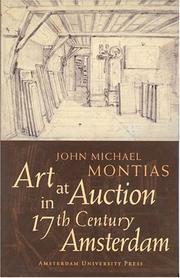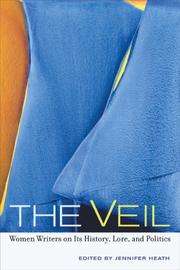| Listing 1 - 10 of 18 | << page >> |
Sort by
|
Book
Year: 1986 Publisher: Leuven Amersfoort Acco
Abstract | Keywords | Export | Availability | Bookmark
 Loading...
Loading...Choose an application
- Reference Manager
- EndNote
- RefWorks (Direct export to RefWorks)
Multi
ISBN: 4005556207749 Year: 2016 Publisher: Ravensburg Ravensburger
Abstract | Keywords | Export | Availability | Bookmark
 Loading...
Loading...Choose an application
- Reference Manager
- EndNote
- RefWorks (Direct export to RefWorks)
Éénmaal... andermaal... verkocht! Wie is de gelukkige eigenaar van de prijskoe Bertha of één van de andere dieren? Menige doortrapte koehandel loopt volkomen uit de hand. Maar wie heeft nu eigenlijk wie te pakken? Alleen wie met boerenverstand biedt en listiger is dan de rest krijgt de lucratiefste dieren in handen!
Rekenen --- Economie --- Basisonderwijs --- Lager onderwijs --- Geld --- Getallenkennis --- Veiling --- Dier --- Handel --- Winst --- Kwartetspel --- vzw Kompanjon
Book
Abstract | Keywords | Export | Availability | Bookmark
 Loading...
Loading...Choose an application
- Reference Manager
- EndNote
- RefWorks (Direct export to RefWorks)
Ornamental plants --- Ornamental plants --- Cut flowers --- Cut flowers --- Standardizing --- Standardizing --- Regulations --- Regulations --- Professional associations --- Professional associations --- Auctions --- Auctions --- Dutch flower auctions --- Veiling --- Bloemenveilingen --- Nederland --- Vbn --- Criee --- Netherlands --- Netherlands --- Dutch flower auctions --- Veiling --- Bloemenveilingen --- Nederland --- Vbn --- Criee
Book
ISBN: 9783901261442 Year: 2010 Publisher: Krems Bremen Kunstmeile Krems Betriebs GmbH, Kunsthalle Krems Paula Modersohn-Becker-Stiftung
Abstract | Keywords | Export | Availability | Bookmark
 Loading...
Loading...Choose an application
- Reference Manager
- EndNote
- RefWorks (Direct export to RefWorks)
Auction catalogs --- Auctions Catalogs --- Catalogues de vente aux enchères --- Catalogus van veilingen --- Veiling catalogus --- Veilingcatalogi --- Veilingcatalogus --- Modersohn-Becker, Paula --- Modersohn-Becker, Paula.

ISBN: 9053565914 9786610958856 904850516X 1280958855 0585496455 9780585496450 9789048505166 9781280958854 9789053565919 Year: 2002 Publisher: Amsterdam : Amsterdam University Press,
Abstract | Keywords | Export | Availability | Bookmark
 Loading...
Loading...Choose an application
- Reference Manager
- EndNote
- RefWorks (Direct export to RefWorks)
In this study of Amsterdam's Golden Age cultural elite, John Michael Montias analyzes records of auctions from the Orphan Chamber of Amsterdam through the first half of the seventeenth century, revealing a wealth of information on some 2,000 art buyers' regional origins, social and religious affiliations, wealth, and aesthetic preferences. Chapters focus not only on the art dealers who bought at these auctions, but also on buyers who had special connections with individual artists.
Art auctions --- Art dealers --- Artists and patrons --- Patrons and artists --- Art patrons --- Dealers (Retail trade) --- Auctions --- History --- veiling --- verzamelaars --- kunsthandel --- 17de eeuw --- Amsterdam --- kunstverkoop, kunstveiling --- kunstverkoop, kunstveiling. --- verzamelaars. --- kunsthandel. --- 17de eeuw. --- Amsterdam.
Book
ISBN: 9076991103 9789076991108 Year: 2006 Volume: 5 Publisher: Ieper Stad Ieper
Abstract | Keywords | Export | Availability | Bookmark
 Loading...
Loading...Choose an application
- Reference Manager
- EndNote
- RefWorks (Direct export to RefWorks)
Böhm, François Emmanuel --- Stedelijk Museum [Ieper] --- Böhm, François --- Böhm, François ( 1801-1973 ) --- optocht --- C3 --- kunstenaars --- veiling --- Kunst en cultuur --- Exhibitions --- Böhm, François ( 1801-1973 ). --- Böhm, François, --- Criticism and interpretation --- Stedelijk Museum [Ypres] --- stoet --- Böhm, François --- stoet. --- Böhm, François.
Book

ISBN: 9789080266704 Year: 2008 Publisher: Hoogstraten De Hoogstraatse Pers
Abstract | Keywords | Export | Availability | Bookmark
 Loading...
Loading...Choose an application
- Reference Manager
- EndNote
- RefWorks (Direct export to RefWorks)
C5 --- KADOC - Documentatie- en Onderzoekscentrum voor Religie, Cultuur en Samenleving (1977-) --- tuinbouw --- veiling --- 634/635.8 groenten en fruit --- 339 handel --- 658.849.7 veilingen --- 93 geschiedenis --- Maatschappelijke organisaties en maatschappelijk leven --- Fruit --- Auctions --- History --- Vegetables

ISBN: 1282772317 9786612772313 0520941608 9780520941601 9780520250406 0520250400 9780520255180 0520255186 9781282772311 661277231X Year: 2008 Publisher: Berkeley University of California Press
Abstract | Keywords | Export | Availability | Bookmark
 Loading...
Loading...Choose an application
- Reference Manager
- EndNote
- RefWorks (Direct export to RefWorks)
This groundbreaking volume, written entirely by women, examines the vastly misunderstood and multilayered world of the veil. Veiling- of women, of men, and of sacred places and objects-has existed in countless cultures and religions from time immemorial. Today, veiling is a globally polarizing issue, a locus for the struggle between Islam and the West and between contemporary and traditional interpretations of Islam. But veiling was a practice long before Islam and still extends far beyond the Middle East. This book explores and examines the cultures, politics, and histories of veiling. Twenty-one gifted writers and scholars, representing a wide range of societies, religions, ages, locations, races, and accomplishments, here elucidate, challenge, and/or praise the practice. Expertly organized and introduced by Jennifer Heath, who also writes on male veiling, the essays are arranged in three parts: the veil as an expression of the sacred; the veil as it relates to the emotional and the sensual; and the veil in its sociopolitical aspects. This unique, dynamic, and insightful volume is illustrated throughout. It brings together a multiplicity of thought and experience, much of it personal, to make readily accessible a difficult and controversial subject. Contributors: Kecia Ali, Michelle Auerbach, Sarah C. Bell, Barbara Goldman Carrel, Eve Grubin, Roxanne Kamayani Gupta, Jana M. Hawley, Jasbir Jain, Mohja Kahf, Laurene Lafontaine, Shireen Malik, Maliha Masood, Marjane Satrapi, Aisha Shaheed, Rita Stephan, Pamela K. Taylor, Ashraf Zahedi, Dinah Zeiger, Sherifa Zuhur
Veils --- Veils in literature. --- Headgear --- Hijab (Islamic clothing) --- Social aspects. --- History. --- american muslim women. --- amish veil. --- community. --- controversial. --- cultural studies. --- dress code. --- emotional. --- expression of the sacred. --- gender studies. --- gospel. --- groundbreaking. --- hasidic women. --- hijab. --- identity. --- india. --- islam. --- islamic dress. --- male veiling. --- medieval europe. --- middle east. --- modesty. --- mourning. --- muslim women. --- patriarchy. --- religious studies. --- sensual. --- separation. --- seven veils. --- sociopolitical. --- trauma. --- veil. --- veiling. --- wearing a veil. --- wedding veil. --- womanhood. --- women.
Book
Year: 2022 Publisher: Basel MDPI - Multidisciplinary Digital Publishing Institute
Abstract | Keywords | Export | Availability | Bookmark
 Loading...
Loading...Choose an application
- Reference Manager
- EndNote
- RefWorks (Direct export to RefWorks)
This Special Issue draws attention to religious transformations currently emerging in the Middle East that diverge from the dominating rhetoric surrounding ‘radicalization’, ‘political Islam’, or the ‘Islamic awakening’. Particularly after the Arab uprisings, other currents seem to be coming more to the fore that need careful examination, such as the contemporary realities of religious ambivalence, religious doubts, disengagement from religious movements such as the Muslim Brotherhood, the search for alternative forms of spirituality or individualized piety, de-veiling, and different forms of non-conformism, free thinking, non-belief, and atheism. Accordingly, the contributions to this Special Issue provide highly relevant insights into several contemporary debates that are crucial in the social sciences and religious studies. This includes processes of individualization; the study of everyday lived (non-)religion; the anthropology of doubt, ambivalence, and ambiguity; and, last but not least, the deconstruction of the religious–secular divide, a divide that is seen as almost impenetrable according to many actors in the Middle East. This Special Issue consists of a cross-section of current works in social science, religious studies, and related fields on Islam/religion and non-religion in the Middle East. The articles present case studies from different countries in the Middle East, with examples from Turkey, Morocco, Egypt, and Syria, as well as studies on diaspora and social media.
Religion & beliefs --- (un)veiling --- gender --- spirituality --- piety --- non-belief --- the self --- Islam --- Egypt --- moral ambivalence --- religious doubt --- Turkey --- Hajj --- Morocco --- everyday life --- self-formation --- anthropology of non-religion --- lived religion --- online activism --- humor --- memes --- nonbelievers --- freethinkers --- atheism --- Syria --- Arab world --- social media --- criticism of Islam --- religiosities --- non-religiosities --- youth --- Alexandria --- processes of individualisation --- Islamism --- Muslim Brotherhood --- disengagement --- the Arab Spring --- social movements --- n/a
Book
Year: 2022 Publisher: Basel MDPI - Multidisciplinary Digital Publishing Institute
Abstract | Keywords | Export | Availability | Bookmark
 Loading...
Loading...Choose an application
- Reference Manager
- EndNote
- RefWorks (Direct export to RefWorks)
This Special Issue draws attention to religious transformations currently emerging in the Middle East that diverge from the dominating rhetoric surrounding ‘radicalization’, ‘political Islam’, or the ‘Islamic awakening’. Particularly after the Arab uprisings, other currents seem to be coming more to the fore that need careful examination, such as the contemporary realities of religious ambivalence, religious doubts, disengagement from religious movements such as the Muslim Brotherhood, the search for alternative forms of spirituality or individualized piety, de-veiling, and different forms of non-conformism, free thinking, non-belief, and atheism. Accordingly, the contributions to this Special Issue provide highly relevant insights into several contemporary debates that are crucial in the social sciences and religious studies. This includes processes of individualization; the study of everyday lived (non-)religion; the anthropology of doubt, ambivalence, and ambiguity; and, last but not least, the deconstruction of the religious–secular divide, a divide that is seen as almost impenetrable according to many actors in the Middle East. This Special Issue consists of a cross-section of current works in social science, religious studies, and related fields on Islam/religion and non-religion in the Middle East. The articles present case studies from different countries in the Middle East, with examples from Turkey, Morocco, Egypt, and Syria, as well as studies on diaspora and social media.
(un)veiling --- gender --- spirituality --- piety --- non-belief --- the self --- Islam --- Egypt --- moral ambivalence --- religious doubt --- Turkey --- Hajj --- Morocco --- everyday life --- self-formation --- anthropology of non-religion --- lived religion --- online activism --- humor --- memes --- nonbelievers --- freethinkers --- atheism --- Syria --- Arab world --- social media --- criticism of Islam --- religiosities --- non-religiosities --- youth --- Alexandria --- processes of individualisation --- Islamism --- Muslim Brotherhood --- disengagement --- the Arab Spring --- social movements --- n/a
| Listing 1 - 10 of 18 | << page >> |
Sort by
|

 Search
Search Feedback
Feedback About UniCat
About UniCat  Help
Help News
News